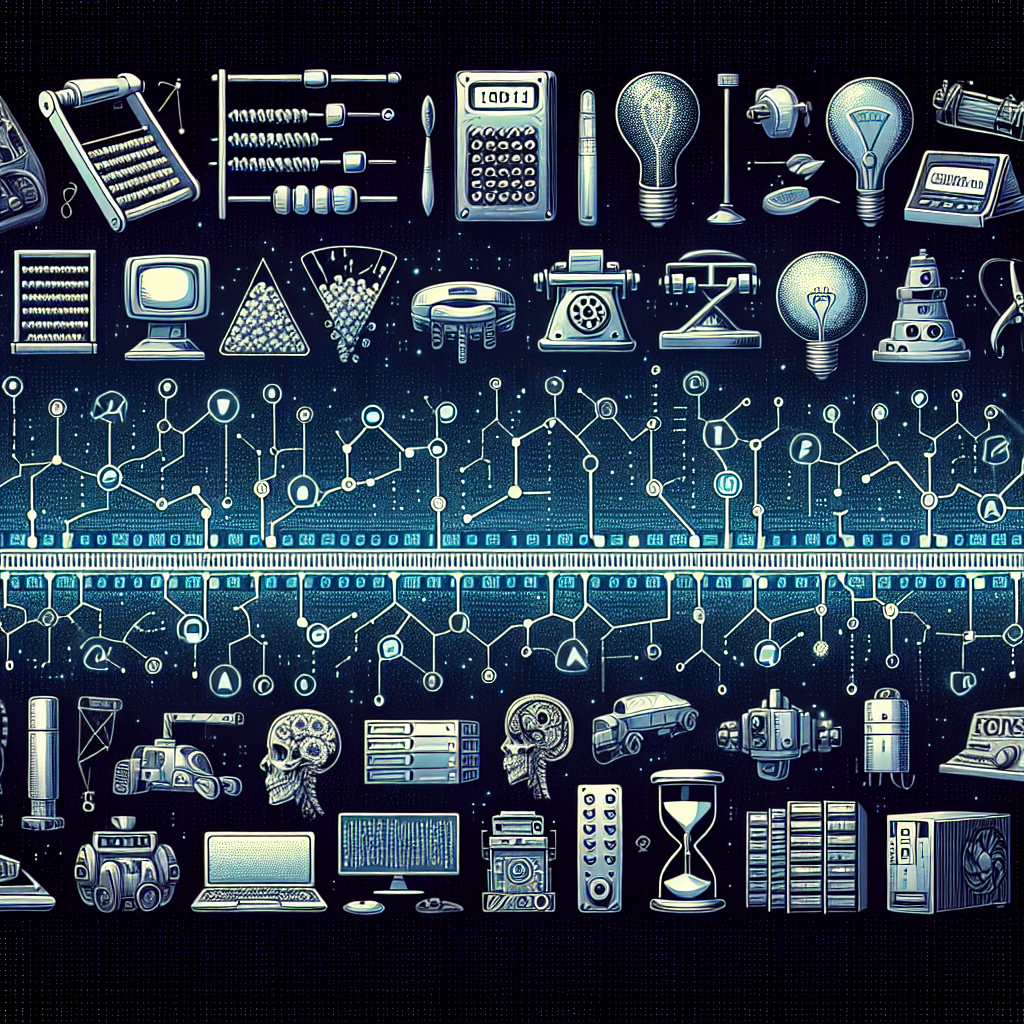The Quest for AGI: A Timeline of Milestones and Breakthroughs
Artificial General Intelligence (AGI) – the holy grail of artificial intelligence research. AGI refers to a machine that possesses the ability to understand, learn, and apply knowledge in a way that is indistinguishable from human intelligence. While we have made significant strides in the field of artificial intelligence in recent years, achieving AGI remains a daunting challenge. In this article, we will explore the timeline of milestones and breakthroughs in the quest for AGI.
1956 – The Dartmouth Conference
The field of artificial intelligence was born in 1956 at the Dartmouth Conference, where the term “artificial intelligence” was first coined. The conference brought together a group of researchers who believed that it was possible to create machines that could think and learn like humans.
1958 – The Perceptron
In 1958, Frank Rosenblatt introduced the perceptron, a type of artificial neural network that could learn from its mistakes and improve its performance over time. While the perceptron was limited in its capabilities, it laid the foundation for the development of more advanced neural networks in the future.
1970s – Expert Systems
During the 1970s, researchers began to develop expert systems – computer programs that could mimic the knowledge and decision-making abilities of human experts in specific domains. While expert systems were successful in limited applications, they were unable to generalize their knowledge beyond the specific domain they were designed for.
1997 – Deep Blue vs. Kasparov
In 1997, IBM’s Deep Blue defeated reigning world chess champion Garry Kasparov in a highly publicized match. While Deep Blue’s victory was a significant milestone in the field of artificial intelligence, it was a narrow victory that relied on brute force computing power rather than true intelligence.
2011 – Watson
In 2011, IBM’s Watson defeated two former champions on the game show Jeopardy!. Watson demonstrated the ability to understand natural language and generate answers to complex questions in real-time. While Watson’s victory was impressive, it highlighted the limitations of current AI systems in terms of understanding context and ambiguity.
2016 – AlphaGo
In 2016, Google’s DeepMind team developed AlphaGo, an AI system that defeated the world champion Go player Lee Sedol. Unlike previous AI systems, AlphaGo used a combination of deep learning and reinforcement learning to master the complex game of Go. AlphaGo’s victory demonstrated the power of deep learning in solving complex problems.
2020 – GPT-3
In 2020, OpenAI released GPT-3, a language model that is capable of generating human-like text based on a prompt. GPT-3 is one of the largest and most powerful language models ever created, with 175 billion parameters. While GPT-3 is a significant achievement in natural language processing, it still falls short of true AGI.
The Road to AGI
While we have made significant progress in the field of artificial intelligence, achieving AGI remains a distant goal. The quest for AGI is a complex and multi-faceted challenge that requires advances in a wide range of areas, including:
1. Cognitive Science – Understanding how the human brain processes information and learns new concepts is crucial for developing AGI.
2. Neuroscience – Studying the structure and function of the brain can provide valuable insights into how intelligence emerges in biological systems.
3. Machine Learning – Developing algorithms and models that can learn from data and adapt to new tasks is essential for building AGI.
4. Robotics – Integrating AI systems with physical robots can help bridge the gap between virtual and physical intelligence.
5. Ethics – Addressing the ethical implications of AGI, such as job displacement, bias, and privacy, is essential for ensuring the responsible development of AI.
FAQs
Q: When will we achieve AGI?
A: Predicting when AGI will be achieved is difficult, as it depends on a wide range of factors, including technological advancements, research funding, and ethical considerations. Some experts believe that AGI could be achieved within the next few decades, while others believe it may take longer.
Q: Will AGI be a threat to humanity?
A: The potential risks and benefits of AGI are a topic of much debate among researchers and policymakers. While AGI has the potential to revolutionize society in positive ways, it also poses risks such as job displacement, bias, and misuse. It is important to address these ethical and societal implications proactively to ensure the safe and responsible development of AI.
Q: How can I contribute to the quest for AGI?
A: There are many ways to contribute to the development of AGI, including pursuing a career in AI research, supporting organizations that are working towards AGI, and staying informed about the latest advancements in the field. By working together, we can help unlock the full potential of artificial intelligence and pave the way for a future where machines can think and learn like humans.
In conclusion, the quest for AGI is a long and challenging journey that requires collaboration, innovation, and ethical leadership. While we have made significant progress in the field of artificial intelligence, achieving AGI will require continued investment and dedication from researchers, policymakers, and the public. By working together towards this common goal, we can unlock the full potential of artificial intelligence and pave the way for a future where machines can think and learn like humans.

